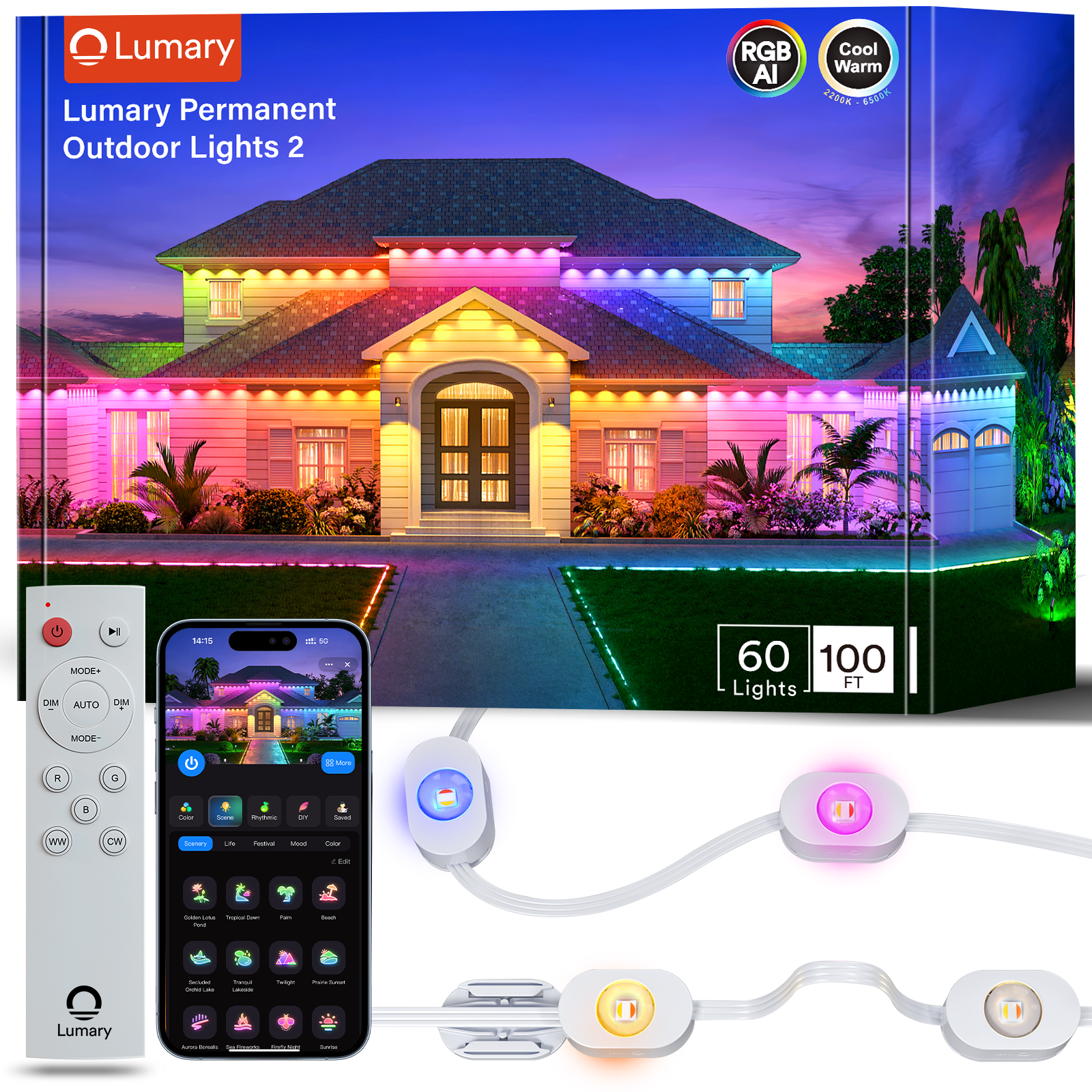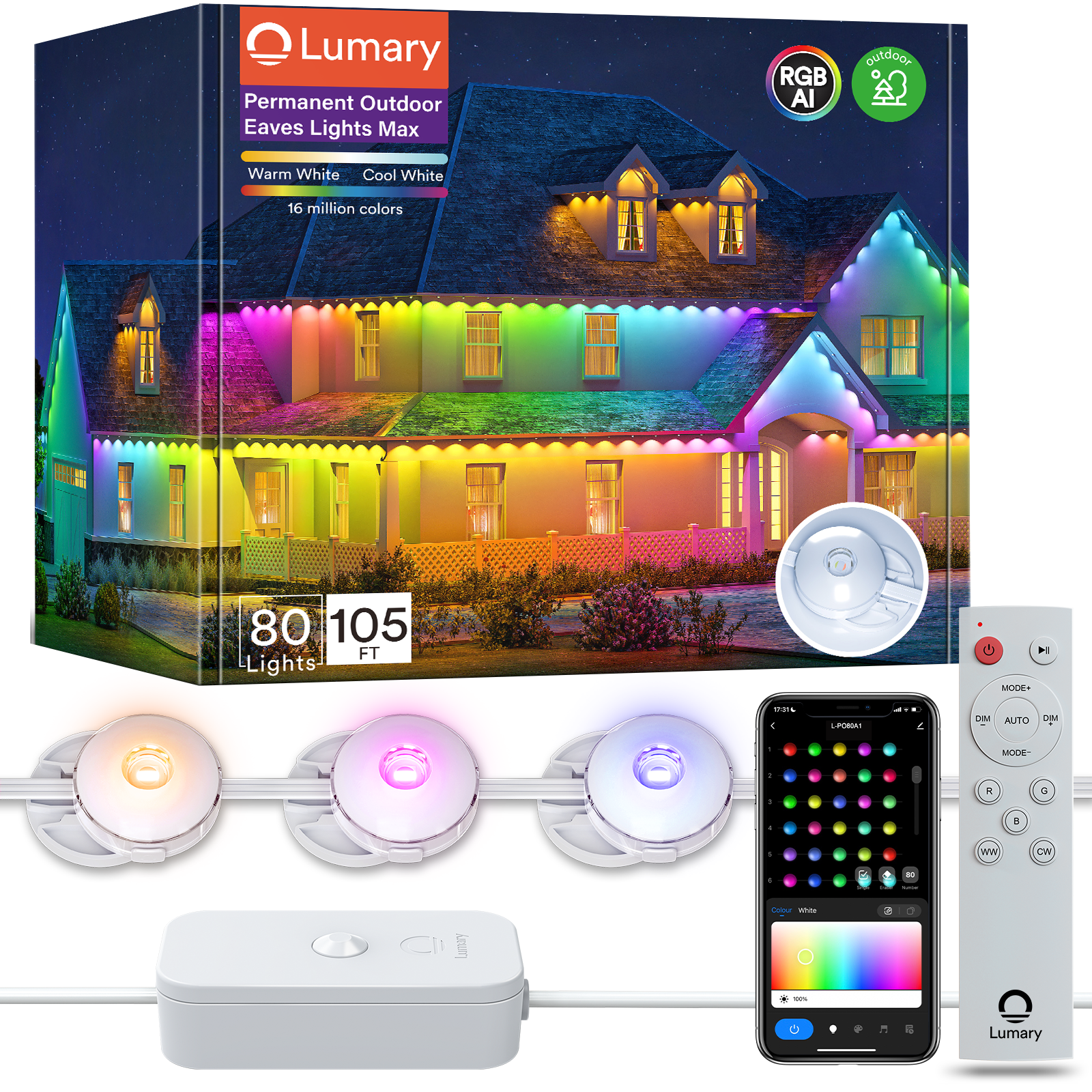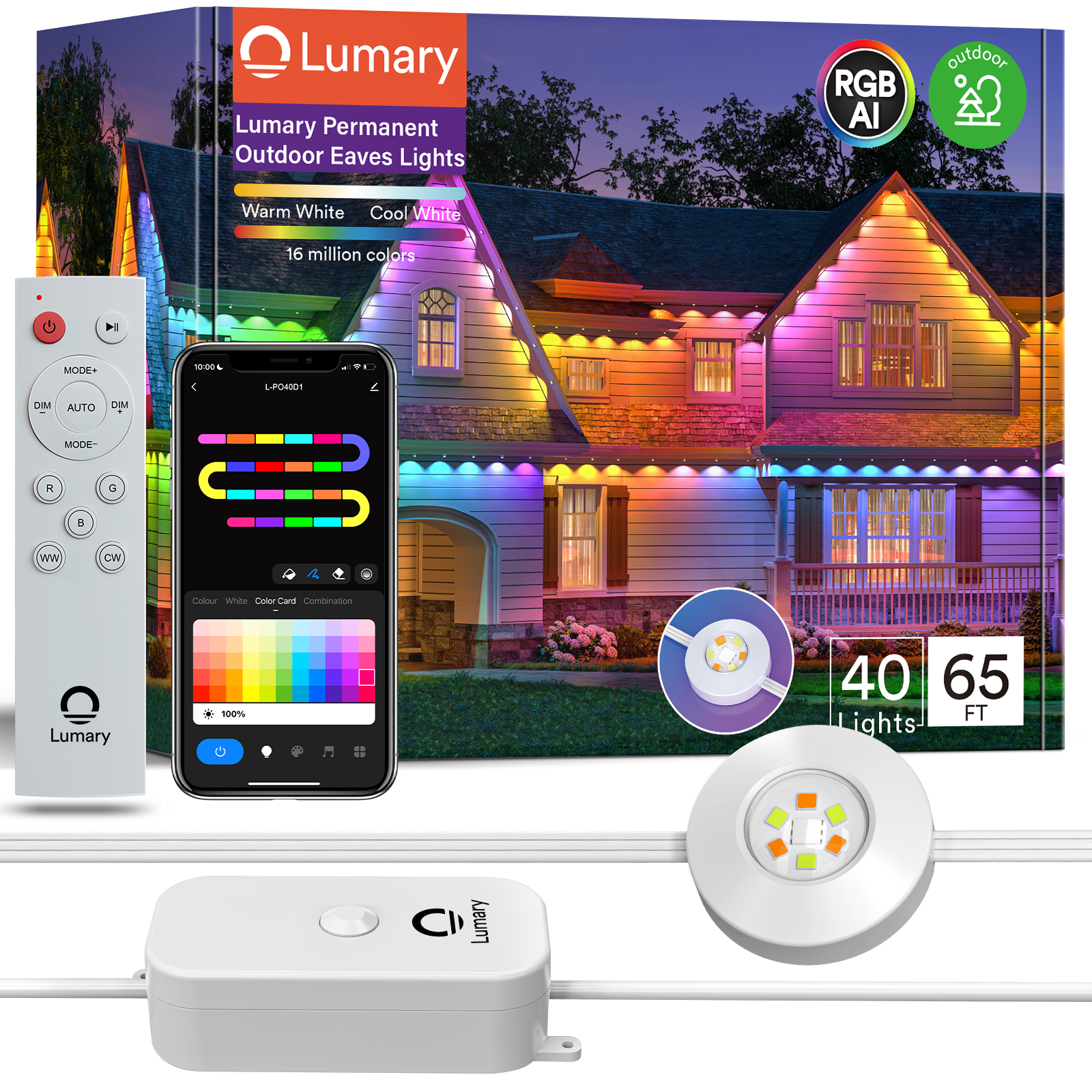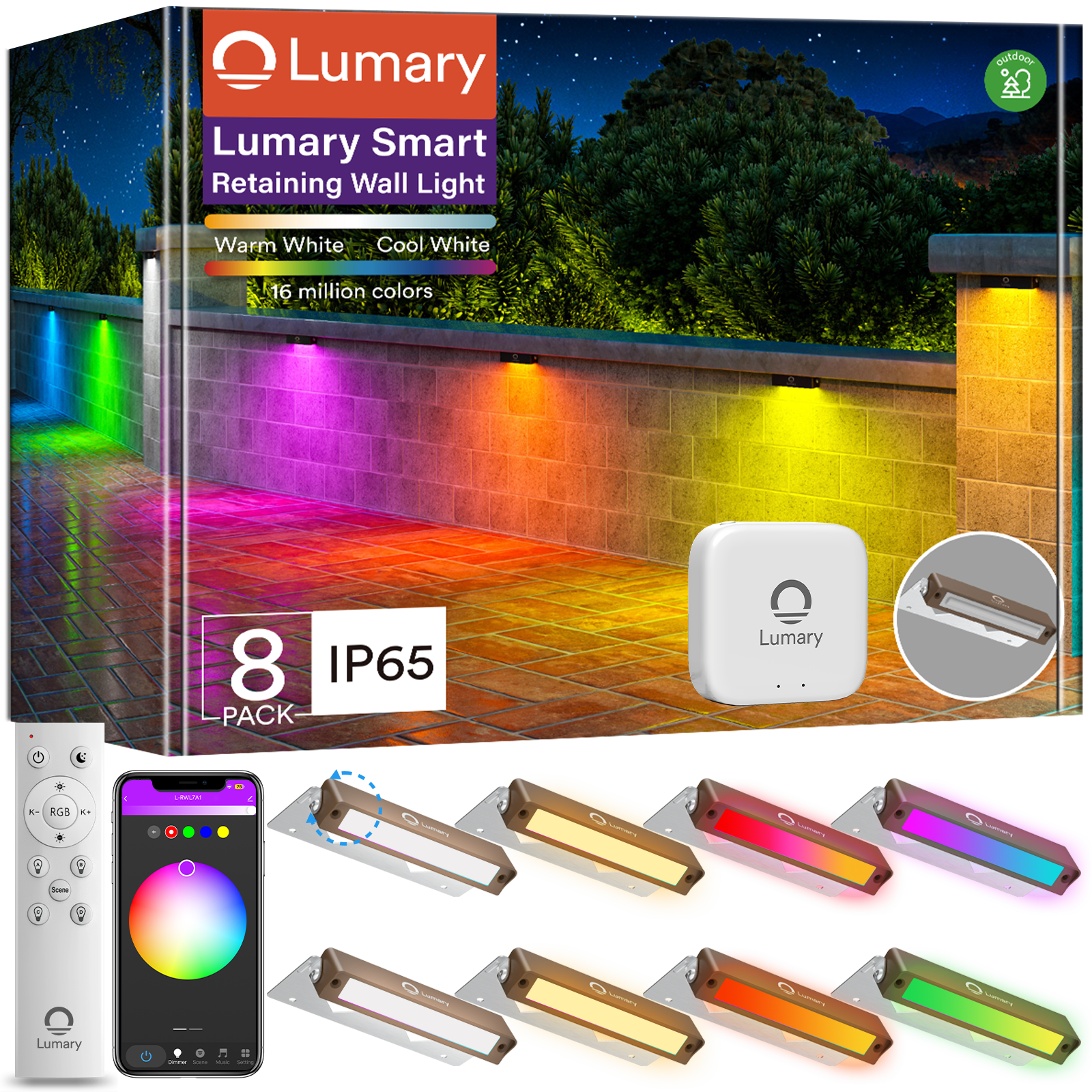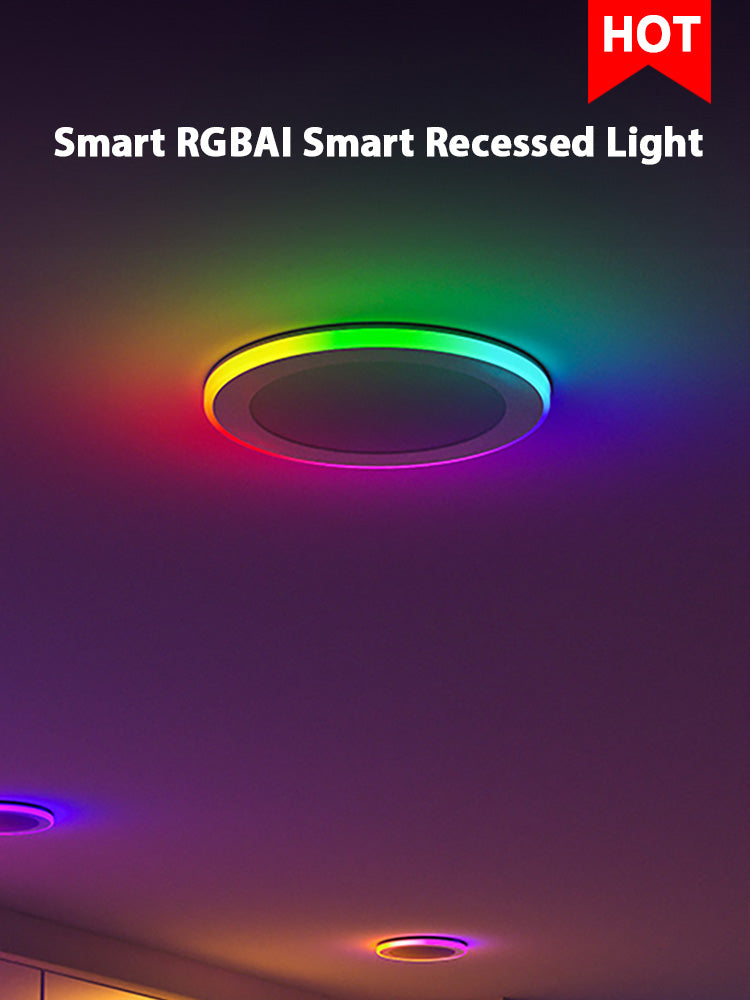Imagine walking into a room where the lights adjust to your mood or schedule without you lifting a finger. That’s the magic of smart wall lights. These modern lighting solutions bring convenience, energy savings, and a sleek aesthetic to your home. Whether you’re upgrading your indoor spaces or enhancing your patio, smart lighting transforms how you experience your environment. In 2025, setting up these lights has never been easier. With a little guidance, you can enjoy a connected, stylish, and efficient home in no time.

Key Takeaways
-
Pick the best smart wall lights for your room. Think about smart bulbs, switches, or light strips that fit your needs.
-
Get tools like a screwdriver and voltage tester ready first. Being prepared makes the setup easier.
-
Make sure your home’s wiring works with the smart lights. Check voltage and connections for easy control.
-
Follow simple steps to install smart bulbs, switches, or strips. Doing it right helps the lights work well.
-
Use the app to change your smart lighting. You can adjust brightness, colors, and set timers for a cozy feel.
Preparing for Smart Light Installation
Getting ready to install smart lights in your home doesn’t have to feel overwhelming. With the right preparation, you’ll have your smart lighting system up and running in no time. Let’s break it down step by step.
Choosing the Right Smart Wall Lights
Before you dive into installation, you need to pick the perfect light fixtures for your space. Here’s what to consider:
Types of smart wall lights
Smart lighting comes in various forms. You can choose from smart bulbs, wall switches, or light strips. Bulbs are great if you want to upgrade existing fixtures without hardwiring. Switches let you control multiple lights at once, while light strips are perfect for adding a modern touch to walls or furniture.
Key features to consider
Look for features that match your needs. Dimming options let you set the mood, while color-changing lights add personality to your space. Voice control is a must if you want hands-free convenience. Many smart wall lights also connect to your smart home system, making them easy to manage.
Tools and Materials for Installation
Once you’ve chosen your lights, gather the tools and materials you’ll need. Having everything ready will make the process smoother.
Essential tools
You’ll need a screwdriver, voltage tester, and possibly a drill. These tools help you safely install a light fixture or replace an old one.
Additional materials
Depending on the type of light, you might need mounting brackets or waterproof wire nuts. For outdoor installations, these ensure durability and safety.
Ensuring Compatibility with Your Home
Before you install smart lights, double-check that they’ll work with your setup.
Checking wiring and voltage requirements
Make sure your home’s wiring and voltage match the requirements of your smart lighting. Some lights work without hardwiring, but others may need specific connections.
Verifying compatibility with smart home systems
If you use Alexa, Google Home, or another smart home assistant, confirm that your lights can connect. This ensures you can control them seamlessly through voice commands or apps.
By preparing ahead, you’ll save time and avoid headaches. Now you’re ready to install smart lights and transform your home into a modern, connected space.
Step-by-Step Smart Light Installation
Now that you’ve prepared everything, it’s time to install your smart lights. Follow these steps to get your lighting system up and running.
Installing Smart Bulbs
Removing old bulbs and installing smart ones
Start by turning off the light switch to ensure safety. Carefully unscrew the old bulb and set it aside. Take your new smart bulbs and screw them into the socket. Make sure they’re snug but don’t overtighten them.
Testing the connection before proceeding
Turn the light switch back on and check if the smart bulbs light up. If they do, you’re good to go. If not, double-check the bulb’s compatibility with your fixture and ensure it’s properly installed.
Installing Smart Wall Switches
Turning off power and removing the old switch
Before you install lights and wire switch components, turn off the power at the circuit breaker. Use a voltage tester to confirm there’s no electricity flowing. Unscrew the old switch and disconnect the wires.
Wiring and mounting the smart switch
Connect the wires from your smart switch to the ones in your wall. Follow the manufacturer’s instructions for proper wiring. Once connected, mount the switch into the wall box and secure it with screws. Restore power and test the switch to ensure it works.
Installing Smart Wall Sconces
Mounting the Lumary Smart Wall Sconce
To install wall sconces like the Lumary Smart Wall Sconce, start by attaching the mounting bracket to the wall. Align the sconce with the bracket and secure it using the provided screws.
Securing waterproof connections for outdoor use
If you’re installing the sconce outdoors, use the included waterproof wire nuts to protect the connections. This ensures durability and safety in all weather conditions. Once everything is secure, test the sconce by turning it on and using the app or voice control to adjust its settings.
With these steps, your smart light installation will be a breeze. You’ll soon enjoy the convenience and modern touch of a fully connected smart home.
Installing Smart Light Strips
If you’re planning to connect multiple strips, make sure the connectors are compatible. Some strips allow you to extend them, while others don’t. Check the product instructions to avoid any surprises.
Attaching and securing the strips to the wall
Once you’ve got the right length, peel off the adhesive backing from the strip. Carefully stick it to the surface, pressing firmly as you go. If the adhesive isn’t strong enough, use mounting clips or brackets for extra support. These are especially helpful for uneven or textured surfaces.
For corners or tricky spots, bend the strip gently or use corner connectors if provided. Make sure the strip is secure and aligned properly. Plug it into the power source and ensure the connection is tight.
Testing the Installation
Restoring power and testing functionality
Now it’s time to bring your smart light installation to life. Restore power to the area by flipping the circuit breaker back on or plugging in the light strip. Open the app or use your smart home system to turn on the lights.
Ensuring all lights are working properly
Check the entire strip to see if every section lights up. If some parts don’t work, inspect the connections and ensure the strip wasn’t incorrectly. Test features like dimming, color changes, and voice control to confirm everything works as expected.

With your smart light strips installed, your space will have a modern, vibrant glow. You’ve just added a touch of style and convenience to your home!
Configuring and Using Smart Wall Lights
Once your smart light installation is complete, it’s time to configure and start using your new lighting system. This part is where the magic happens—you’ll connect your lights, customize settings, and integrate them with your smart home.
Setting Up the Smart Lighting App
Downloading the app and creating an account
First, download the app recommended for your smart wall lights. For example, if you’re using Lumary smart bulbs, grab the Lumary app from your app store. Once installed, open the app and create an account. It’s quick and easy—just follow the prompts to set up your profile.
Pairing devices and connecting to Wi-Fi
Next, pair your smart bulbs with the app. Turn on the lights and follow the app’s instructions to connect them to your Wi-Fi network. Make sure you’re using a 2.4GHz network, as most smart lighting systems require it. Once paired, you’ll have full control of your lights right from your phone.
Customizing Your Smart Lighting
Adjusting brightness, colors, and schedules
Now comes the fun part—customizing your lights! Use the app to adjust brightness levels and pick from millions of colors. Want a cozy vibe for movie night? Dim the lights and choose a warm tone. You can also set schedules so your lights turn on or off automatically, saving you time and energy.
Using smart scenes and music sync features
Take it up a notch with smart scenes. Create presets for different moods, like “Relax” or “Party.” If you love music, try the music sync feature. Your lights will change colors and pulse to the beat, turning your indoor space into a mini dance floor.
Integrating with Smart Home Systems
Connecting to Alexa, Google Assistant, or Siri
If you use a smart home assistant, connect your smart lighting to it. Open the assistant’s app and link your lighting system. Once connected, you can control your lights with simple voice commands like, “Alexa, dim the living room lights.”
Setting up routines and automation
Finally, set up routines to make your life easier. For example, program your lights to turn on when you wake up or off when you leave the house. Automation adds convenience and makes your smart lighting setup feel truly seamless.
With these steps, you’ll unlock the full potential of your smart wall lights. From personalized settings to hands-free control, your home will feel more modern and connected than ever.
Troubleshooting and Maintaining Smart Wall Lights
Even with the best preparation, you might run into a few hiccups while setting up or maintaining your smart wall lights. Don’t worry—most issues are easy to fix. Let’s go over some common problems and how to keep your smart lighting system in top shape.
Common Installation Issues
Lights not turning on
If your smart bulbs don’t light up, start with the basics. Check if the power is on and the bulb is screwed in properly. If that doesn’t work, confirm the bulb is compatible with your fixture. A voltage mismatch could also be the culprit. Use a voltage tester to ensure everything aligns with the bulb’s requirements.
Connectivity problems
Struggling to connect your smart bulbs to the app or smart home system? First, make sure your Wi-Fi is on a 2.4GHz network. Many smart lighting systems don’t work with 5GHz. Restart your router and try pairing again. If the issue persists, reset the bulb or device by following the manufacturer’s instructions. This often resolves connectivity glitches.
Maintaining Your Smart Lighting System
Cleaning and replacing components
Dust and dirt can dim your lights over time. Wipe your smart wall lights with a soft, dry cloth regularly. For outdoor fixtures like the Lumary Smart Wall Sconce, check for debris that might block the light. If a bulb burns out, replace it with a compatible smart bulb to keep your system running smoothly.
Updating firmware and apps
Smart lighting systems rely on software updates to stay functional. Open the app and check for firmware updates for your devices. Keeping the app updated ensures you can access the latest features and fixes. Set reminders to check for updates every few months.
When to Seek Professional Help
Identifying complex wiring issues
If you notice flickering lights or inconsistent performance, the wiring might be the issue. Don’t try to fix it yourself if you’re unsure. Faulty wiring can be dangerous and requires expert attention.
Hiring a licensed electrician
For complex installations or repairs, call a licensed electrician. They’ll ensure your smart wall lights are installed safely and correctly. This is especially important for outdoor setups or older homes with outdated wiring.
By addressing these issues and maintaining your smart lighting system, you’ll enjoy a seamless and reliable experience. Your smart home will stay bright, efficient, and easy to control.
Setting up smart wall lights is easier than ever. You’ve learned how to prepare, install, and configure your system step by step. From choosing the right tools to customizing your settings, you now have everything you need to create a modern, connected home.
Smart lighting in 2025 isn’t just about convenience. It’s about saving energy, enhancing security, and adding style to your space. Why wait? Upgrade your home today and enjoy the benefits of a smarter, brighter future.
FAQ
What should I do if my smart lights won’t connect to Wi-Fi?
Tip: Ensure your Wi-Fi operates on a 2.4GHz network.
Restart your router and check your phone’s connection. If the issue persists, reset the smart light using the manufacturer’s instructions. Reopen the app and try pairing again.
Can I install smart wall lights without professional help?
Yes, you can! Most smart lights come with user-friendly instructions. If you’re comfortable with basic tools and safety precautions, you’ll handle it easily. For complex wiring, though, hiring an electrician is safer.
Are smart wall lights energy-efficient?
Absolutely! Smart lights use LED technology, which consumes less energy than traditional bulbs. Plus, features like scheduling and dimming help reduce electricity usage, saving you money over time. 🌱
How do I control my smart lights when I’m not home?
Use the app! Most smart lighting systems, like Lumary, let you control lights remotely via their app. As long as your lights are connected to Wi-Fi, you’ll manage them from anywhere.
Can I use smart wall lights outdoors?
Yes, but choose lights with an IP65 waterproof rating, like the Lumary Smart Wall Sconce. These are designed to withstand outdoor conditions. Use waterproof wire nuts during installation for added safety.


